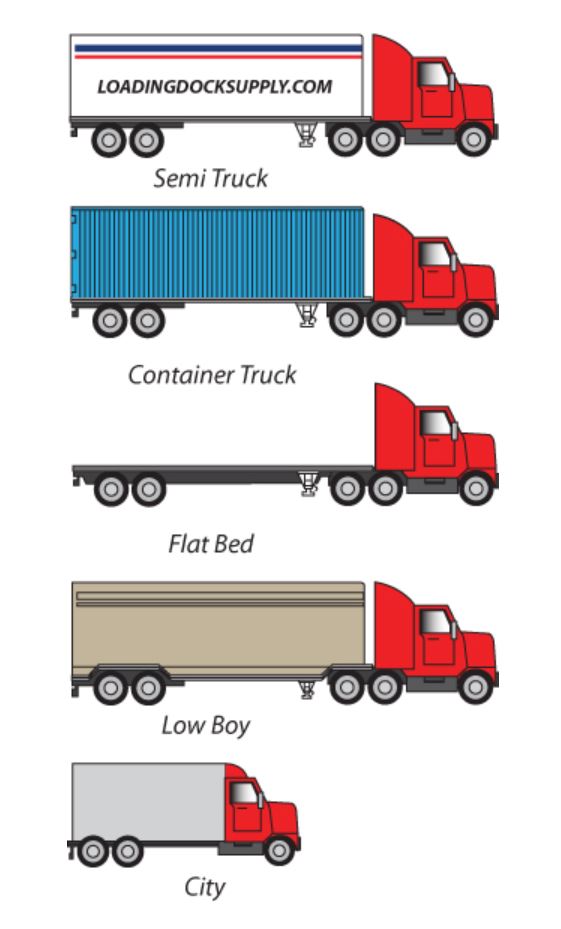In this post, you will learn about the purpose of loading docks, the factors that contribute to their design and their overall impact on logistics.
Have you ever seen a large truck backing into a warehouse and wondered what goes on behind the scenes?
The garage door-like enclosure at the back of the warehouse is called a loading dock, and it’s an effective way to ensure that large freight trucks get loaded and unloaded efficiently.
Chances are, you’ve heard of a loading dock before, but you may not know just how important they are to shippers, warehouses and logistics companies.
Loading docks are a vital part of the logistics and goods transportation industry as a whole.
In this post, you will learn about the purpose of loading docks, the factors that contribute to their design and their overall impact on logistics.
Why Use Dock Trucks?
Some shipments are simply too bulky or come in too large a quantity to be shipped by standard methods. Therefore, they need to be transported as freight instead.
This often requires pallet shipping, which often requires the use of a larger truck and a loading dock.
Slightly smaller loads can be shipped with sprinters, which are large cargo vans. Sprinters typically use van doors, a different opening within a warehouse, but can also be raised and modified to fit a loading dock enclosure.
Here’s a great image from Loading Dock Supply showing the types of trucks that most commonly use loading docks:

Loading docks facilitate the successful use of most freight vehicles, providing a safe and fast way to transfer goods into and out of a warehouse or freight terminal.
Let’s explore how loading docks are used, their key components, and the various types.
What Is A Loading Dock?
A loading dock is a recessed bay in a freight terminal or warehouse that allows for safe and efficient loading and unloading of trucks.. If product is being moved in and out of a facility, there’s a good chance it’s happening by means of a loading dock.
While people often think of loading docks as a way to load and unload freight, associating them with long haul delivery, that is absolutely not always the case.
Dock trucks can be used for the swift, efficient delivery of larger items within cities.
They can be especially useful in refrigerated transportation, where large quantities of temperature controlled freight need to be transferred in a time-sensitive manner.
Types of Loading Docks
There are multiple types of loading docks, all with their own advantages. Let’s run through all of the major ones:
Flush Loading Dock
A flush dock is the most common type of loading dock. In this case, the dock just acts as an opening flush with the warehouse wall, which allows the back of the truck to attach seamlessly to the dock. Flush docks save space because they neither jut out nor require an enclosure for the vehicle.
Enclosed Loading Dock
An enclosed dock is one of the least common types of loading docks. It allows the entire truck to park indoors, protected from the elements. This tends to be great for the preservation of temperature controlled freight. It also comes with disadvantages:
Because an enclosed dock allows an entire truck to park inside, it tends to take up a great deal of space. In addition, enclosed docks require their own ventilation systems to get rid of the exhaust and pollution produced by the trucks in an enclosed setting.
Open Loading Dock
Open docks do not create an enclosure that surrounds the back of a truck. They are subject to weather conditions, which can make them unsafe. Often, they are covered by a roof or canopy, but are not enclosed on the sides. Open loading docks are fairly rare and unpopular.
Sawtooth Loading Dock
Sawtooth docks are used in situations where outdoor maneuvering space is limited. The allow trucks to approach docks at an angle, saving space outside the warehouse. However, sawtooth docks are not always the best solution. While they provide extra space outside a facility, they often waste space inside a warehouse or freight terminal.
There Are Additional Factors That Can Determine The Success Of Loading Docks:
- Dock height can vary, and this can have an impact on the types of trucks that can be loaded and unloaded at a particular facility
- Dock approach refers to the fact that the incline leading up to a dock is not always perfectly flat. If an incline is at too high of an angle (often defined as any angle over 10%), many trucks will not be able to approach the enclosure without it causing damage.
- Door size and width matter for both the truck and the enclosure, which means that not all trucks and loading docks are compatible with one another.. For example, if a truck is taller than the loading dock enclosure, it may not be able to approach the dock or unload freight.
Loading Docks As A Logistics Solution
Loading docks are a crucial element of warehouses and freight terminals for the delivery and warehousing of good across the industry spectrum.
By enabling the use of specialized equipment when loading and unloading freight, loading docks help increase the efficiency of the entire process, cutting costs and getting products to their destinations faster. This can help businesses that rely on the delivery of goods grow and thrive.
As long as a loading dock is built to the right specifications and safety standards, it will be the single best way to transfer freight into and out of a facility.
Cross Docking Logistics Benefits
Cross Docking is one of the most common logistics practices made possible by loading docks and dock trucks.
It refers to a method of delivery in which there is very little material handling from the time a product or larger shipment leaves a manufacturer to the time it is delivered to its end user.
The process uses distribution docking terminals, which are essentially hubs made up of trucks and dock doors. These terminals, equipped with inbound and outbound loading docks, facilitate the quick transfer and consolidation of freight, minimizing the amount of time merchandise needs to be housed in a warehouse.
Cross Docking helps to reduce labor costs and the need for warehouse space. In turn, it gets products to consumers faster, increasing customer satisfaction.
Loading Docks are an Essential Element of the Transportation and Logistics Industry
As technological innovation sweeps through the transportation and logistics industry, one thing is clear:
Shippers, logistics companies and end users benefit from a faster, more efficient delivery process.
They may not be technological innovations themselves, but loading docks and dock trucks play a vital role in creating and reinforcing the technologies designed to improve the shipping and logistics process.
